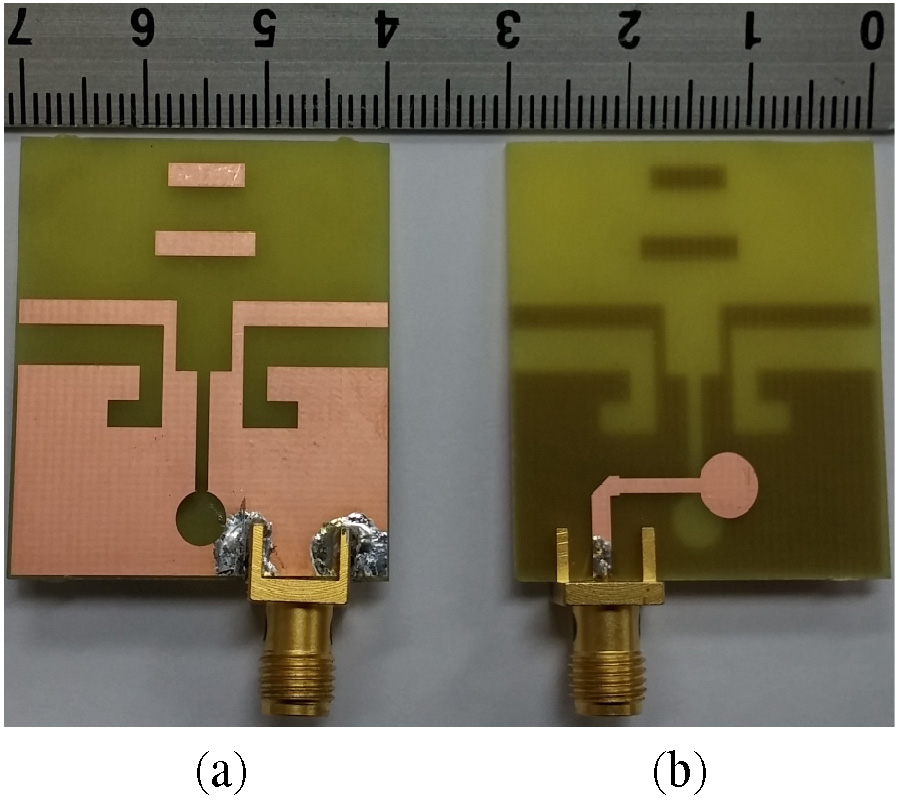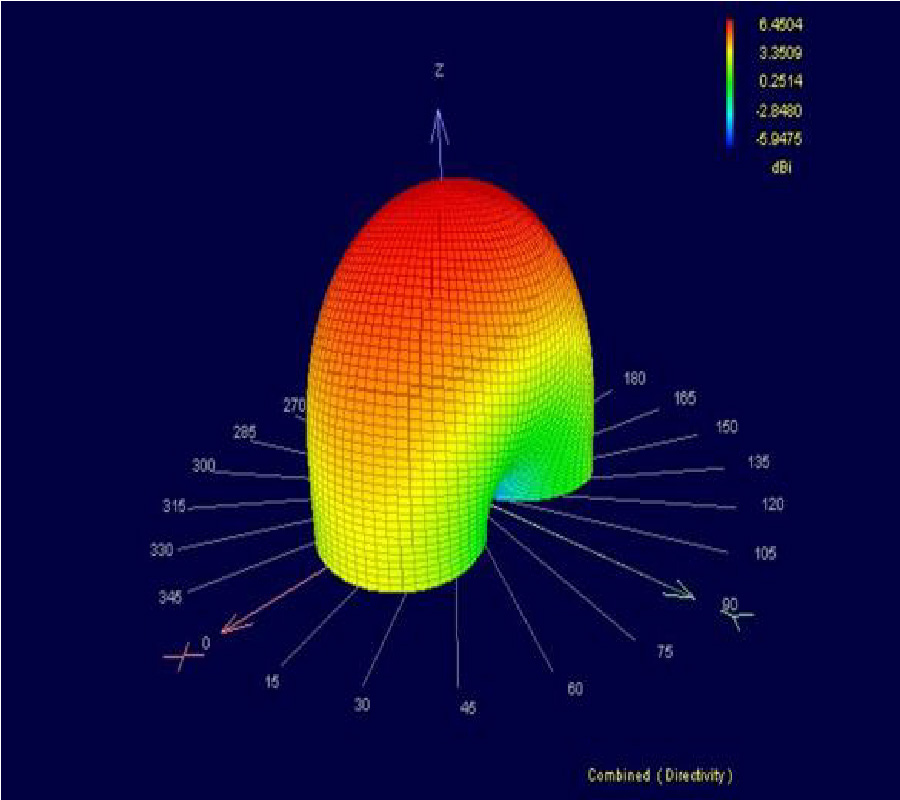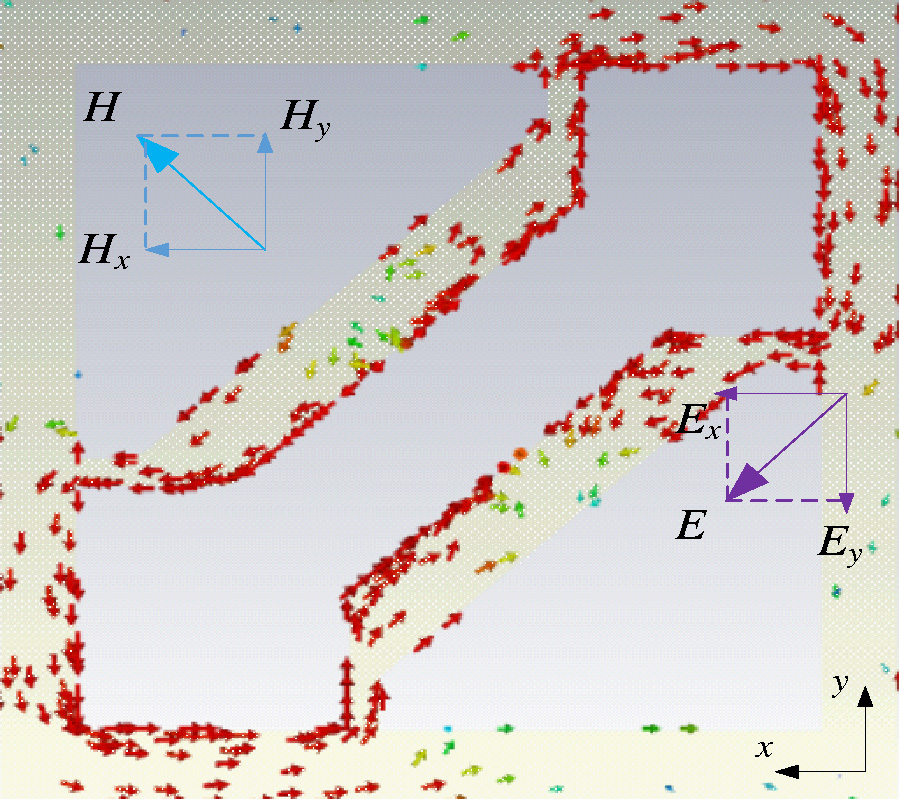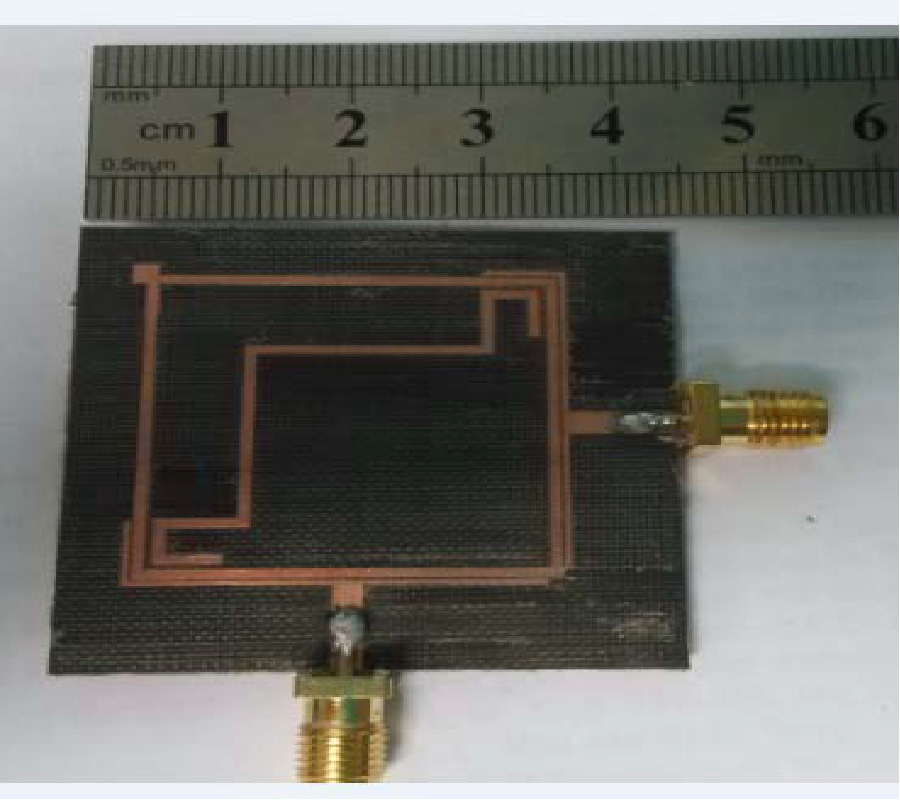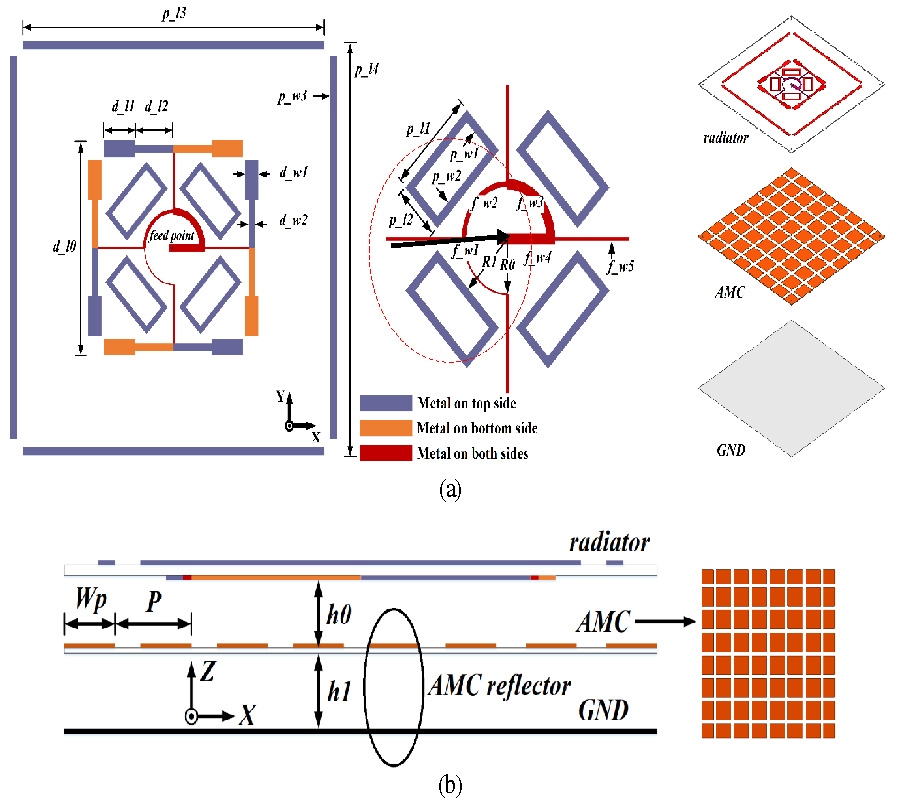2018-09-26 Latest Published
By Guang Li
Fu-Shun Zhang
Progress In Electromagnetics Research Letters, Vol. 78, 141-147, 2018
Abstract
In this paper, a compact wideband circularly polarized (CP) crossed-dipole antenna with wide half-power beamwidth (HPBW) and broad 3 dB axial ratio beamwidth (ARBW) is proposed. The antenna is composed of crossed bowtie dipoles, four pentagonal parasitic elements and eight vertical metallic plates. A double vacant-quarter printed ring with orthogonal bowtie dipoles is designed for CP radiation and broadband characteristics of impedance and 3 dB axial ratio (AR) bandwidths. Parasitic elements and vertical metallic plates are utilized to increase bandwidth and broaden beamwidth further. The total size of the proposed antenna is 0.4λ×0.4λ×0.16λ. Simulated results are in good agreement with the measured ones which demonstrate an impedance bandwidth 88.4% and a 3 dB AR bandwidth 73.1%. The HPBW of more than 120° is 70.0%. The 3 dB ARBWs of more than 120° in E-plane and H-plane are 63.1% and 37.5%, respectively. With both the excellent CP performance and compact size, the proposed antenna is attractive for modern wireless communications.



